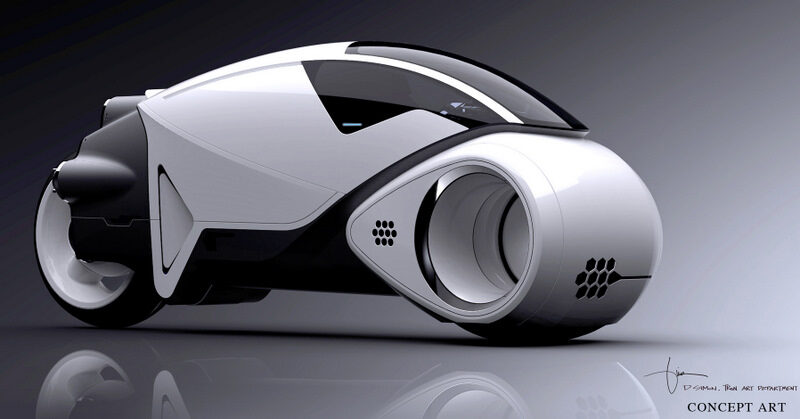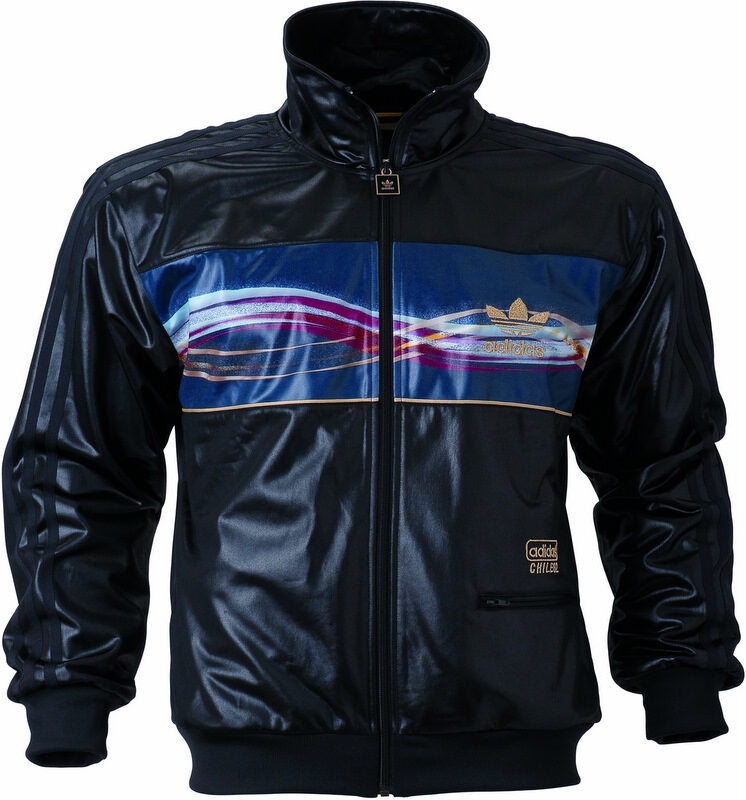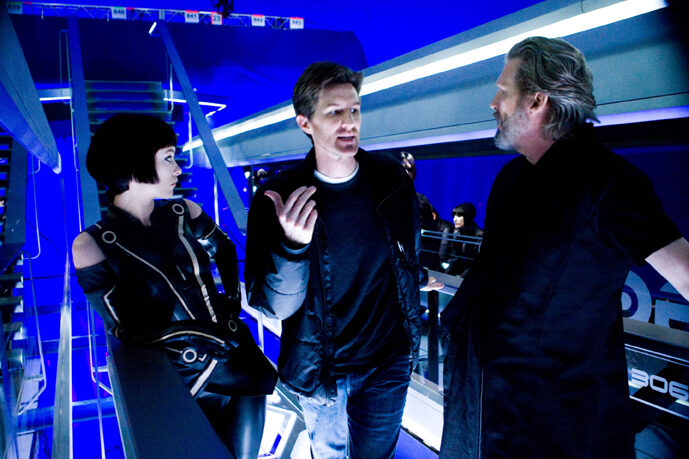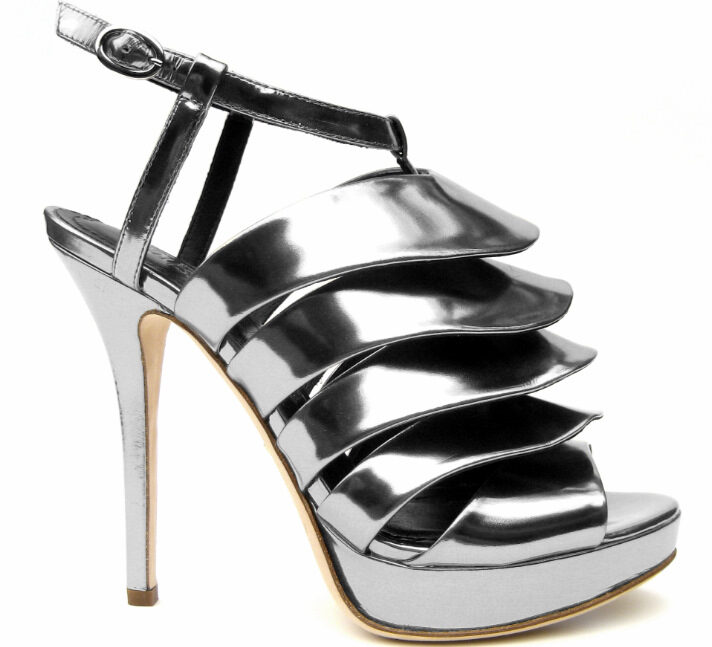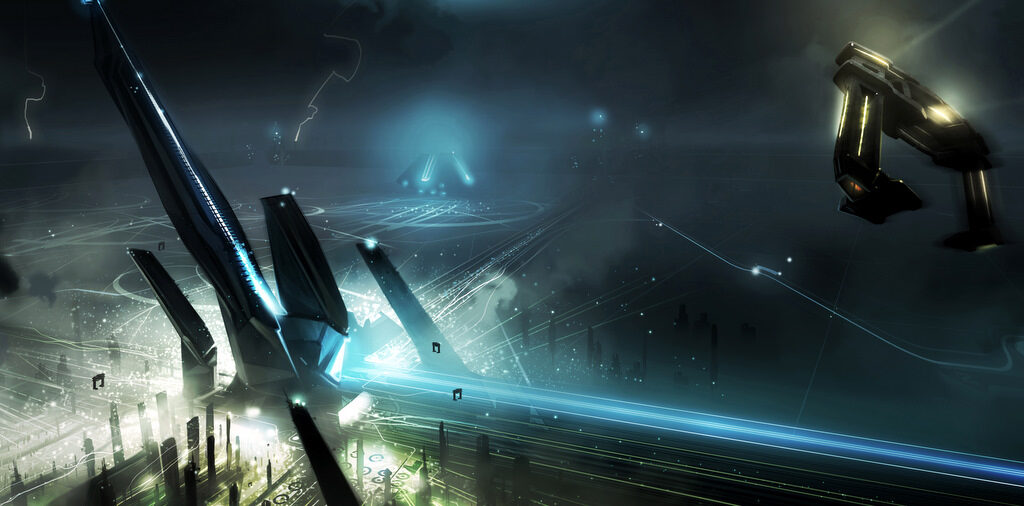Tron Legacy: Merchandising the MCP | Clothes on Film
Seemingly on a par with Tron Legacy: the movie is the mechanising machine surrounding it. Yet apparently this is no simple case of ‘cash-in and run’, it never was. Disney grasped the mindset of Tron from the very beginning. The name means more than product; it is a lifestyle choice.
One might assume that Disney, the entertainment behemoth who continued financing Tron creator Steven Lisberger’s ambitious digital project in 1980 would have taken over the reigns and demanded a gamut of merchandise options to make Lucasfilm weep. Not so, claims Lisberger. There was surprisingly little compromise in their creative/fiscal balancing act:
There is a fairly unknown quote from Walt Disney. “I don’t make movies to make money; I make money to make movies.” One of the old-timers said that the fact that this film is so scary and experimental it actually what makes the studio feel like what it was like when Walt used to be here.
Disney wanted to take a risk and freely embraced Lisberger’s creativity (though the idea of ‘computer animation’ did concern them. “They were never on board with that”, he notes). This did not mean the company would fail to exploit all revenue opportunities, however, namely merchandising, which after Star Wars was a cash cow, though as an industry still finding its feet.
An officially licensed arcade game was one way to explicate the ethos of Tron, as were Tomy action figures and even costume jewellery. Yet the real legacy of Tron as a culture signifier was through inspiration. This progression took time to filter into the mainstream, but when it did everything from fashion to music and vehicle design became a by-product of Tron.
Indeed it is impossible to look at the shape of the Bugatti Veyron without seeing the original Tron light cycle. Moreover in an ironic twist, former Bugatti vehicle designer Daniel Simon was hired to create the new light cycle for Tron Legacy; itself undeniably influenced by a product it had already influenced some ten years before (when the Veyron began development). This apparent design paradox also bled into the world of fashion.
Jean Paul Gaultier employed the Tron principle of ‘exposed technology’ for his mid-1980s collections (revealing the machinations of function and creation), often translating his look as exposure from within, e.g. underwear worn as outerwear. Though more contemporary fashion, or rather ‘high fashion’, has straddled a half way point between the original Tron and Tron Legacy. There is concentrated application of light, the life source of Tron, and vectors, but now with a more monochrome, minimalist edge. Much like the new Tron light suit, in fact.
Hussein Chalayan’s fall 2007 strapless shift dress covered in 1,500 LED lights is a natural evolutionary step in that it actually appears animated. While Garath Pugh’s angular ‘OLED (Organic Light Emitting Diod) dress’ is a blatant retro throwback. Its impossible lines are less connected to the world of Tron than already part of it.
Perhaps Ryan Genz and Francesca Rosella’s ‘Galaxy Dress’ is the finest fusion of old and new however. It is colourful and feminine, minimalist to a degree; a contortion of analogue and digital. Quite who influenced who is a possible consequence of the Tron evolutionary paradox. Even so, not all cultural references to Tron are incidental. There are a range of officially licensed products trickling onto the market to coincide with the release of Tron Legacy.
Here we have a carefully coordinated union of merchandising and specifically costume where ideas and design sketches must be shared from an early stage to ensure consistency. While most of the Tron Legacy fashion merchandise is ‘inspired by’ or simply a reinterpretation of the original film, other items have clearly been designed with cohesion in mind. This synchronisation not only guarantees direct relationship with the new movie, it essentially dictates the new culture of Tron.
This does not guarantee quality, however, and if Adidas created a fun Tron homage with their retro light cycle Stan Smiths, their Tron Legacy hi-tops are disappointingly unimaginative. There is no culture in an outmoded facsimile. These actually work against the innovation image that Tron Legacy is attempting to project – to patent.
Tron Legacy director Joseph Kosinski always intended to be respectful of the original film rather than subservient to it. He had his own evolution to implement:
I’m not trying to recreate the original Tron; I’m trying to recreate my impressions of the original Tron. That’s one of the main reasons why I was attracted to this project: the possibility to do something new.
Kosinski’s filmmaking background before Tron Legacy was largely promo and advertisement based (Nike, Gears of War for Epic). Freely admitting the influence of Stanley Kubrick, he brings a clean, sparse, Neo-Victorian vibe to the Grid. The cutting-edge, yet pared back light suit costumes by Michael Wilkinson and Christine Bieselin Clark fit comfortably into his vision.
Despite apparent slips, at least some of the Tron Legacy merchandising, clothing and hardware, direct tie-ins with some real thought behind their development, is successful in evoking the spirit of the film. Footwear designer Jerome C. Rousseau has created a perfectly in keeping, brutally sexy pair of 5′ stilettos in pewter leather with fabric coating. Oddly enough he admits to having the poster for Tron on his wall before he was even offered the commission. Apparently Rousseau envisaged his own future of the Grid as a means of personal inspiration; evidence that the culture of Tron is evolutionary even independent of a follow-up movie.
Rousseau was hand chosen by Disney and shown early footage from Tron Legacy to aid in his design, beyond that of his own creativity of course. Versace and Balenciaga were also approached to produce mens and womenswear lines respectively. The retail presence behind Tron Legacy is unparalleled, certainly for a sequel to a cult sci-fi movie and certainly with regards to fashion. The Rousseau shoes, along with other selected tie-in apparel, are currently for sale at a ‘pop-up’ shop in Los Angeles (which even boasts its own ‘Tron café’ featuring Lightcycle Salad with Endives) and then from selected stores internationally in February.
Further marketing successes can be found with Burton’s retro but sleekly colour lined snowboard boots, Robin Rotenier’s stunning ($2,600) necklace and outside of fashion with Apple’s light disc inspired iPod dock and a selection of glowing blue Tron Evolution consoles and joypads (of which the Wiimote arguably feels most ‘right’). For failures see a set of motorcycle leathers with ‘skirt’ supposedly resembling that worn by Olivia Wilde’s character Quorra (the manufacturers describe it as ‘wearable’ – their emphasis), pseudo-futuristic ‘teen wear‘ by Opening Ceremony and an unexpectedly vulgar set of Hayden-Harnett handbags.
Yet what needs to be considered when ‘buying into’ the merchandising world of Tron is how it will fit into your own lifestyle. It is not simply a case of setting a starkly illuminated PS3 down in your lounge and expecting it to transform the room into CLU’s headquarters. There are values of Tron that even if not all merchandising peddlers are not following, consumers would be wise to.
Jeff Bridges plays Kevin Flynn in the movie, a man trapped in a vast, cruel cosmos of his own making. Choosing to live ‘off the Grid’, he has become a hippie-like messiah of the analogue world. He has rejected his own creation as Dr. Frankenstein rejected his Monster. Where as once he was a virtuoso of technology, now he is alienated by it. The Grid has come to represent detachment.
For lifestyle to emulate the culture of Tron it must be embraced unequivocally. Not in covering your body head to foot with the Disney logo, but by understanding how Tron philosophy has evolved. It is looking back but looking forward. Tron Legacy represents the future of the past.
Tron Legacy is released in the UK and U.S. on 17th December.
Steven Lisberger and Joseph Kosinski were interviewed at Digital Domain in Los Angeles, September 2010.
© 2010 – 2011, Chris Laverty.
Related Posts:


